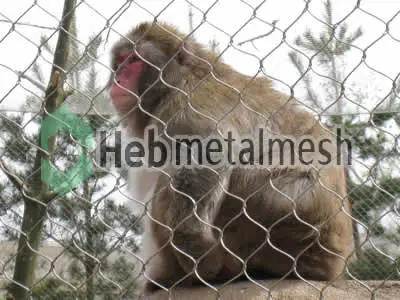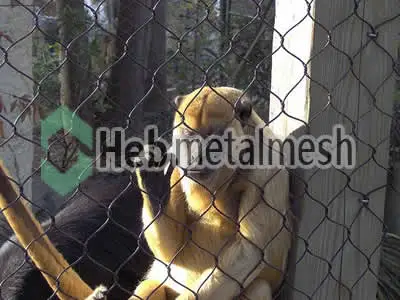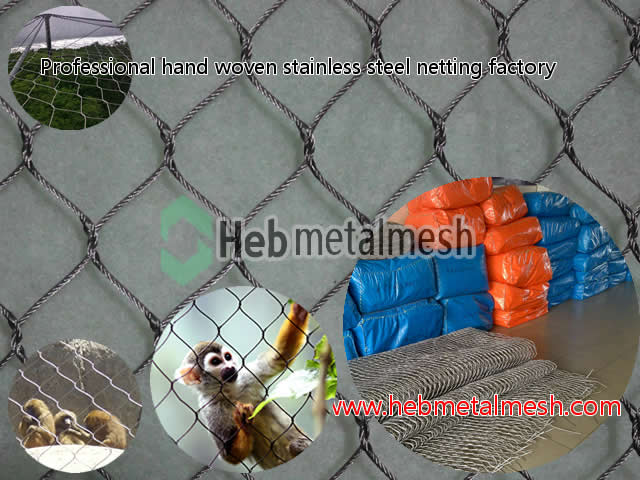Introduction to Monkey Enclosures
Monkey enclosures in zoological settings serve pivotal roles, prioritizing both the safety of the animals contained as well as the protection of zoo visitors. The primary purpose of these enclosures is to offer a secure habitat that supports the physical and psychological well-being of the primates. As highly intelligent and social creatures, monkeys require environments that permit natural behaviors—such as climbing, swinging, and interacting with their peers. This aspect of enclosure design is critical, as it directly impacts the health and happiness of the animals.
Equally important is the safety of zoo visitors. Enclosures must be constructed in a manner that prevents unauthorized access by both humans and other animals, thereby mitigating risks of injury or escape. Suitable fencing solutions are essential components in achieving this, ensuring that barriers effectively contain the monkeys while allowing visitors to observe them without disturbing their natural activities. The strategic use of materials like fencing nets plays a significant role in balancing safety with visibility.
The choice of materials used in constructing enclosures can profoundly influence the welfare of the captive monkeys. Stainless steel fencing nets, for example, are becoming increasingly popular due to their strength, durability, and ability to withstand the often challenging outdoor conditions present in zoo environments. These fencing nets provide not only a strong barrier but also the flexibility to design spacious habitats that mimic the monkeys’ natural surroundings. The integration of various fencing net styles can facilitate an enriched environment, promoting behaviors that are crucial for the monkeys’ physical and emotional health. Thus, the selection of appropriate materials is fundamental to creating effective enclosures that uphold both animal welfare and visitor safety.

Understanding Stainless Steel Fencing Nets
Stainless steel fencing nets are renowned for their exceptional durability and strength, making them an ideal choice for various applications, including zoo enclosures for monkeys. These nets are designed to withstand harsh environmental conditions, ensuring long-lasting performance and reduced maintenance requirements. The robustness of stainless steel allows these fences to endure significant impact, which is crucial in a high-activity area such as a zoo where animals may put considerable stress on their enclosures.
One of the foremost advantages of stainless steel fencing nets is their impressive resistance to rust and corrosion. Unlike traditional steel, stainless steel contains chromium, which forms a protective layer that prevents oxidation. This characteristic is particularly beneficial in outdoor environments where exposure to moisture and varying weather conditions could compromise the integrity of the fencing material. Consequently, zoo facilities can maintain a safe and sanitary environment for their inhabitants, reducing the risk of corroded fencing that could lead to potential escapes or safety hazards.
In addition to its rust-resistant properties, stainless steel fencing nets offer an overall strength that surpasses many other fencing materials. The tensile strength of stainless steel allows it to maintain its form and structural integrity under pressure, ensuring that it remains intact even when subjected to the natural instincts of curious or energetic monkeys. Moreover, when considering security, certain grades of stainless steel, such as 304 and 316, are often utilized due to their superior resistance to corrosive elements present in outdoor settings. These specific grades have a higher nickel content, which further contributes to their longevity and effectiveness in securing animal enclosures.
Overall, the combination of durability, rust and corrosion resistance, and strength makes stainless steel fencing nets a preferred option for creating secure and effective enclosures for zoo monkeys, helping to ensure their safety and well-being.

Comparative Advantages of Stainless Steel Over Other Materials
When selecting materials for zoo monkey enclosures, a critical analysis reveals that stainless steel fencing nets present several advantages over traditionally used options such as chain link, wire mesh, and acrylic. Each material possesses unique characteristics that can significantly influence the longevity and effectiveness of the enclosures.
Stainless steel fencing nets are renowned for their durability and resistance to corrosion, which extends their lifespan in outdoor environments. Unlike chain link fencing, which can rust over time, stainless steel maintains its integrity even when exposed to the elements. Additionally, the strength of stainless steel surpasses that of standard wire mesh, which may sag or become weakened under stress. This robust nature contributes to the overall security of enclosures, providing an effective barrier against potential breaches.
From a maintenance perspective, stainless steel offers advantages due to its non-porous surface that resists staining and is easy to clean. In contrast, materials like chain link and wire mesh can trap debris and require regular maintenance to prevent deterioration. Acrylic, meanwhile, while visually appealing due to its transparency, is more susceptible to scratching and weathering, which can compromise its effectiveness in containing animals.
Moreover, the aesthetic quality of stainless steel fencing nets should not be overlooked. Unlike the industrial appearance of chain link, stainless steel provides a modern and sleek look that can enhance the visual appeal of animal enclosures. This can positively influence visitor experience, as a well-maintained, visually appealing enclosure fosters a more engaging environment for both animals and visitors.
In summary, when evaluating materials for zoo monkey enclosures, stainless steel fencing nets emerge as a superior option due to their unmatched durability, low maintenance, enhanced security features, and aesthetic advantages compared to chain link, wire mesh, and acrylic alternatives.

Safety and Welfare Considerations for Monkeys
The choice of fencing materials is a fundamental aspect that significantly influences the safety and welfare of monkeys within zoo enclosures. Stainless steel fencing nets are increasingly utilized in such scenarios due to their durability and strength. One of the primary concerns in designing monkey enclosures is preventing escapes. Monkeys are highly intelligent and agile creatures, and a well-designed stainless steel fencing net can effectively deter them from climbing or squeezing through openings. This aspect of security is crucial not only for the well-being of the animals but also for the safety of visitors and the surrounding community.
In addition to escape prevention, it is essential to consider the physical implications of the fencing materials on the monkeys themselves. Monkeys engage in various behaviors that can sometimes result in injuries if the fencing is not appropriately designed or maintained. Stainless steel nets offer smoother finishes and tightly woven structures, which help minimize the risk of physical harm caused by sharp edges or protrusions. Ensuring a safe environment is vital for the physical health of these primates, as it reduces the likelihood of cuts, abrasions, or entrapments that can arise from inadequately constructed enclosures.
Moreover, the visibility offered by stainless steel fencing nets plays a significant role in enhancing the mental well-being of monkeys. Transparent or semi-transparent materials promote naturalistic behaviors by allowing the animals to observe their surroundings without feeling confined. This visibility can stimulate their curiosity and encourage interactions with their environment, which is crucial for their psychological health. It is well-established that primates thrive in environments that mirror their natural habitats; therefore, a combination of safety, physical integrity, and visibility provided by fencing nets ensures that their welfare remains a top priority. Ultimately, a well-designed enclosure using stainless steel fencing nets contributes positively to the overall quality of life for monkeys in captivity.
Maintenance and Care of Stainless Steel Fencing Nets
Proper maintenance and care of stainless steel fencing nets are crucial for ensuring their longevity and effectiveness, particularly in environments like zoo monkey enclosures. These nets, designed to withstand the elements, require minimal upkeep compared to other materials, yet a systematic maintenance routine enhances their durability and performance.
Regular cleaning is a primary step in maintaining stainless steel fencing nets. Accumulation of dirt, debris, and biological matter can lead to degradation over time. Using a mild detergent and a soft brush or cloth, zoo staff should clean the fencing nets periodically to remove any contaminants. It is advisable to conduct these cleaning sessions during scheduled inspections to streamline procedures and ensure all aspects of the enclosure are routinely checked.
While stainless steel is known for its resistance to rust and corrosion, preventive measures should still be taken to further diminish potential issues. Applying a rust inhibitor can add an extra layer of protection, especially in high-humidity environments. Additionally, regular inspections for physical damage, such as fraying or bending, should be performed. These inspections help to identify problems before they escalate into more significant issues, thereby ensuring the fencing net remains functional and safe for its inhabitants.
When signs of wear and tear become evident, it may be necessary to replace sections of the fencing net or the entire system, depending on the extent of damage. A thorough assessment can guide this decision-making process. Encouraging a proactive approach to maintenance not only safeguards the monkeys but also extends the lifespan of the stainless steel fencing nets, providing a cost-effective solution for zoo management over time.
Zookeeper Insights: Experiences with Stainless Steel Fencing
The implementation of stainless steel fencing nets in zoo environments has garnered various insights from zookeepers who have directly worked with this material. These professionals, extensively involved in animal management and care, have observed both the benefits and challenges associated with stainless steel fencing. Many zookeepers report that the durability of these fencing nets significantly enhances the safety of enclosures for monkeys and other wildlife. For instance, one zookeeper mentioned, “Since we installed stainless steel nets, we haven’t faced a single incident of escape. The strength and resilience of this material instill a sense of security.” This indicates that when considering fencing solutions, stainless steel nets offer vital strength that is particularly beneficial for containing active species like monkeys.
However, challenges can arise in the maintenance and initial installation of stainless steel fencing. A zookeeper recounted, “The installation process was daunting due to the weight and rigidity of the material. It required specialized tools and skilled labor.” This highlights the need for careful planning and resources when integrating fencing nets into existing enclosures. Additionally, some zookeepers have faced challenges concerning the aesthetics of their facilities. While stainless steel provides robust protection, its industrial look may not always blend harmoniously with the natural environment of the zoo. A balance must be struck between functionality and visual appeal in the enclosure design.
Overall, zookeepers have found that the benefits often outweigh the drawbacks. The sturdiness of the fencing nets has led to more effective animal management, reducing stress for both animals and staff. As one zookeeper stated, “With these nets, we can focus on the well-being of our monkeys without constantly worrying about potential breaches.” This sentiment reflects a broader consensus among professionals in the field, affirming that stainless steel fencing nets play a vital role in contemporary zoo practices.
Regulatory Standards and Best Practices
The design and installation of enclosures in zoos, particularly for primate species, are subject to strict regulatory standards and best practices established by various wildlife and zoo organizations. These standards ensure the safety and well-being of both the animals and visitors, while promoting ethical practices in animal care. Among the numerous enclosure materials available, stainless steel fencing nets are increasingly favored due to their robustness, durability, and compliance with these regulatory frameworks.
Zoo industry standards often emphasize the need for enclosures that are secure, escape-proof, and free from potential hazards. Stainless steel fencing nets are known for their resistance to corrosion, wear, and climate impacts, making them an ideal choice for outdoor animal habitats. Organizations such as the Association of Zoos and Aquariums (AZA) and the World Association of Zoos and Aquariums (WAZA) have established guidelines that dictate the dimensions and structural integrity of enclosures. Stainless steel nets, with their high tensile strength, exceed these requirements, ensuring that animals cannot breach their enclosures.
In addition to meeting regulatory standards, best practices in the design and installation of fencing nets involve ensuring that enclosures promote natural behavior among primates. This can include designing spaces that mimic natural habitats, incorporating climbing structures, and ensuring that stainless steel nets are positioned to provide visual barriers and shade as needed. Furthermore, regular maintenance is critical to retain the integrity of the fencing over time, preventing rust or degradation that could impact the safety of the enclosure.
Ultimately, when implemented correctly, stainless steel fencing nets contribute significantly to the overall compliance and welfare standards set forth by wildlife organizations, ensuring a safe, functional, and enriching environment for zoo monkeys.
Cost Analysis of Stainless Steel Fencing Nets
The introduction of stainless steel fencing nets in zoo monkey enclosures presents a significant financial consideration for zoo operators. The initial investment in stainless steel compared to other fencing materials, such as wood, vinyl, or traditional wire fencing, tends to be higher. This premium cost is primarily attributed to the material’s superior durability and strength, which are crucial when containing active and intelligent animals like monkeys.
When evaluating the lifecycle costs of a stainless steel fencing net, the benefits become apparent. Unlike wooden fencing, which may require frequent replacements and maintenance due to weathering and animal wear, stainless steel fencing boasts a much longer lifespan. Depending on the environmental conditions and the type of monkeys housed, stainless steel nets can last two to three times longer than alternative materials. This longevity translates into fewer replacement costs and reduced labor associated with regular maintenance. For instance, while a wooden fence may require annual inspections and treatments, a stainless steel option might only need a simple cleaning procedure.
Moreover, stainless steel fencing nets have low maintenance requirements due to their resistance to rust and corrosion. This inherent quality mitigates the need for costly repairs or treatments, which can accumulate over time. Additionally, unlike other materials, which can present safety risks due to splintering or rusting, stainless steel ensures a safer environment for both animals and staff. The investment may appear steep initially; however, the reduced expenditure on maintenance and repairs often results in significant overall savings.
Ultimately, the cost analysis of stainless steel fencing nets requires a comprehensive understanding of both upfront and ongoing expenses. By factoring in installation costs, lifecycle costs, and the implications of durability and maintenance, it becomes evident that stainless steel may represent the most economical choice in the long run.
Conclusion: Is Stainless Steel Fencing the Right Choice for Zoo Monkey Enclosures?
In considering the suitability of stainless steel fencing nets for monkey enclosures, several crucial factors come into play. First, the strength and durability of stainless steel make it an excellent choice for containing monkeys, which are known for their agility and strength. Unlike other materials, stainless steel is resistant to corrosion, which is particularly important in outdoor settings where weather conditions can lead to rapid deterioration of alternatives such as wood or untreated metals. This characteristic ensures that the fencing can withstand the wear and tear associated with an active monkey environment.
Moreover, the visibility offered by stainless steel fencing nets is a considerable advantage. The open design allows for clear sightlines, not only enhancing keepers’ ability to monitor the animals but also providing an engaging experience for zoo visitors. Aesthetic appeal is another factor to consider, as well-maintained stainless steel can contribute to a modern and sleek appearance in zoo architecture, appealing to both visitors and staff alike.
However, potential drawbacks must also be acknowledged. The initial investment required for stainless steel fencing may surpass that of traditional options, posing budgetary challenges for some facilities. Additionally, while the material is inherently strong, it requires careful design and installation to prevent safety issues, such as sharp edges or inadequate height that could lead to escape or injury. The weight of stainless steel can pose challenges in terms of installation and maintenance, which need to be factored into overall planning.
Thus, while stainless steel fencing nets offer numerous benefits for zoo monkey enclosures, it is essential for zoo planners and designers to carefully evaluate these advantages against potential drawbacks. Further research and consideration of specific zoo needs will play a vital role in making the right choice for both the animals’ welfare and operational efficiency.


